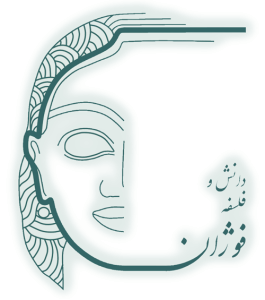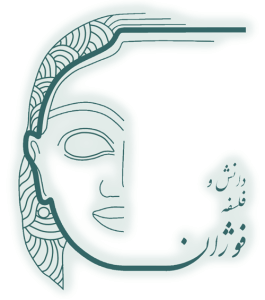An Introduction to Philosophically Gender Studies
Author: Masoume Shahgordi
- Masoume Shahgordi, https://en.foujaninstitute.com/2022/03/24/masoume-shahgordi/
- Azad University, Science and Research Brand, Tehran
- Tehran University
Date: June 2021
Introduction
“Self” is an open system that continually interacts with its surrounding environment and holds exchanging Information with it; which is the most prominent factor in human life leading to the “Identity”. Identities are vividly marked on the body. We elaborate on, assign and attribute significance to our bodies. The self’s primary state is conceptualized as an abstract one without, or before, group allegiance.
Many conceptions of identity are questionable since they are overly homogenizing, essentialist, reductive, or condensed. Identity is as a “horizon of the company”, as “an opening out”, as a “position from which to see,” in which “the Other is inside” to the self’s substantive content, a part of “its own horizon”, and thus a part of its “own identity”. Besides the earlier philosophical discussion of identities and essences, some argue that social identities are “relational, contextual, and primary to the self”. These factors thoroughly affect how we are perceived and interacted with others. This view argues for a positional look of identity, by acknowledging that “the objective basis of sex categories is in the differential relationship to total capacity between men and women.”
The terms Sex and Gender are used in two different contexts. Sex relates to Anatomy and Physiology, while Gender is related to sociological and cultural conditions in nurture, society, and inner feelings. In 1955, Sexologist John Money invented the terminological difference between biological Sex and Gender as a role. Before his work, it was unusual to use the word Gender to refer to anything but grammatical kinds.
In the standard medical profession, the term “Gender” is described in four dimensions:
- Chromosomal
- Genital
- Mental
- Social
Though Gender is as old as humanity itself, the modern conceptualization of gender identity is still evolving. Gender can be (and often is) conceptualized dichotomically exhaustive: there are two genders, and every person has to fit in with one of them, or even, each feature that an individual may have must be part of one or other of this dichotomy. This kind of Gender will determine all its own properties. It is the most limiting way of conceptualizing Gender.
Another possibility is “Gradability of Gender” depending on the number of features one owns belonging to the masculine gender concept or feminine one. These properties are still either feminine or masculine, and it is their segment that determines gender-dependent. Assuming this outlook enables us to talk of more (or less) feminine women or more (or less) masculine men.
Some believe that intrinsic factors, including genes, form gender Identity and relevant socially defined gender constructs. However, the one-dimensional approach to femininity and masculinity have been criticized since many other less stereotypic aspects that might also be highly relevant to representations of masculinity or femininity are dropping in these standard measures. To discuss this issue, and acknowledging population and time-specific pointers of masculinity or femininity, ‘gender diagnosticity’ was introduced in various studies. A gender diagnosticity score is measured using discriminant analysis of a much broader set of predictive pointers that optimally distinguish the membership of two groups. Instead of a categorical male/female assignment, gender diagnosticity is a Bayesian probability that an individual is male or female based on gender-related pointers.
Some viewpoints hypothesize that Gender Identity is a complex multifactorial feature with a heritable polygenic element. They provide historical and social meaning for our structured study of the genetics of gender identity. Studies of families and twins show significant and consistent indication for the role of innate genetic determinants, a minor role for shared environmental factors, and a small potential role for individual environmental portions in developing both cisgender and transgender identities. Heritability assessments are also consistent with other behavioural and personality characteristics.
Variables were being applied to explain the Gender and Gender differences were:
- Nature and nurture (Wood & Eagly, 2002)
- Evolutionary approaches (Buss, 2016)
- Neuroscientific approaches (Fine, 2010)
- Cisgender is applied to referring to a gender identity that matches a person’s sex assigned at birth.
- Transgender assigns to a gender identity that differs from the Sex assigned at birth.
- The term Gender Minority relates to transgender groups and those who do not recognize themselves as transgender but whose gender identity and character differ from traditional, societal, or cultural norms.
- A Gender Stereotype is a general assumption about characteristics, features, and roles that are or could be maintained by women and men.
- Female and male define biological Sex—in humans, non-human animals, and other organisms.
- Females and males are applied only when the subject matter in the inquiry is entirely biological Sex.
- “Women” and “men” are employed when attributing to humans where both biology and culture are concerned.
- “Femininities” and “masculinities” are used to consider gender characteristics (socio-cultural features).

Historical Background
Sigmund Freud’s talk to the United States in 1909 (at G. Stanley Hall’s invitation) was a flag for Freudian and American psychology. Many American scientists were proud of Freud’s ideas, and he got a culture amenable to his ideas about unconscious impulse and personality formation. The Freudian account of gender psychology took power until feminist psychologists challenged female nature’s academic and clinical formulations in the 1960s. Through the early years of psychology, particularly social psychology, the topic “Gender” was widely absent from psychology, as admittedly were women. Male scholars made claims about human nature regarding findings restricted to a small community share, i.e., white, young, non-disabled, middle-class, heterosexual men. If women and girls were considered, they were customarily regarded as subordinates to men and boys. Weisstein (1968) demonstrated that most claims about women presented by leading psychologists, such as Freud and Erikson, missed an evidential grounding and were instead according to these men’s fancies of what women were like rather than experimental data. From 1960 to 2009, one can also notice a marked growth in the prevalence of gender articles, with full years of concern in the late 1970s and 1990s. From the 1960s to the 1980s, a body of literature propagated an erroneous nosology of gender nonconformity, gender dysphoria, and varied gender expressions. The researches were on Social and behavioural context, Polygenic and genes studies, Heritability studies and such. In line with the change above from sex differentiation to gender variations, the most substantial ratio of these essays falls into the subject of “social methods and social concerns,” which covers research on gender roles, masculinity, and femininity.
Through the most considerable portion of the first half of the 20th century, Behaviorism, the dominant paradigm in U.S. academic psychology, was not concerned with individual differences (such as gender differences) or personality; until Terman and Miles developed the first masculinity/femininity (M/F) scale in 1936. The Minnesota Multiphasic Personality Inventory (MMPI) femininity scale was famously normed on a group of 13 homosexual men showing a relation between femininity features and theses homosexual men. By the early 1970s, the hypothesis that M/F exhibited opposite anchors on a unidimensional, bipolar continuum was disputed by a new age of feminist psychologists. The notion of psychological M/F as a unified trait-like feature of personality was retained. However, its elements (femininity and masculinity) were hypothesized to be orthogonal; each expressed its low to a high continuum. Hence, an individual might be defined as high or low F, and high or low M. Spence showed that higher masculinity scores were associated with higher self-esteem in both men and women, countering the notion that one obliged to score highly on both the M and the F scales (considered to be “androgynous”) to be psychologically healthy.
In another research, Mary Kite and Kay Deaux found that the stereotype of gay men is not merely equivalent to the stereotype of heterosexual women, nor is the stereotype of lesbians identical to the stereotype of heterosexual men. Back then, within psycho-dynamically tinted, gender-as-personality psychological research in the United States, empirical investigation of Gender almost exclusively focused on behavioural sex differences.
Stereotypes
According to self-categorization, most people develop their gender identity as male or female and, consequently, common attributes incorporated with the corresponding category into their self-notion. These gendered variations in women and men’s self-concepts then interpret to gender-stereotypical behaviours that offer Social Identity. The most influential hypotheses argue that stereotypes develop in response to societal arrangements, including the parts women and men hold in society, and status disparities among the sexes. Gender stereotypes influence people’s reactions to others, but they also perform an essential role in self-construal, impulse, performance, and behaviour, often out of explicit approval of the stereotype. Further research illustrated the salience of Gender in any provided context and defined the extent to which an individual performs gender-stereotypical behaviour. For example, Ryan and colleagues explain that while women and men behave in line with gender stereotypes, Gender and gender diversity are salient.
Nevertheless, these variations in positions and behaviours, cease when alternative identities, such as being a student, are remarkable. The move away from Gender as merely a trait or a role stimulated efforts to measure the parameters of beliefs about Gender, including investigating gender stereotypes, their endurance and consequences on social intercommunication, and the sexist assumptions that bear and maintain confidence on stereotypes. Both the entry and the outgrowths of these stereotypes have gained much concentration in social psychology.
Social Psychology focuses on how gender stereotypes create and influence our judgment of self and others’ assessment. The most extensively mentioned theories on stereotype development—social role theory and the stereotype content model-focused on Gender as a binary concept. Most astounding social-psychological investigations into Gender are handled using an overly binary definition of Gender in women and men. For the majority part, they are not using more complicated or more fluid representations of Gender into account and hence are incapable of resolving gendered stances and behaviour outside of the gender binary.
Problem Representation
Let us consider Nature-Nurture Debate as a line drawn from the past to the present. We have a work done by John Locke: “An Essay Concerning Human Understanding” (1690) which is often regarded as the foundational principle of the “blank slate view” that put all of the stress on “Nurture”. Then there was a two-dimensional view of stereotypes between men and women, namely warmth and competence. However, these stereotypes did not apply equally to all women and men. Instead, subgroups of men and women come with their own stereotypes. Many different subcategories of women (or men could) exist—homemakers, feminists, lesbians— and consequently what it means to recognize as a woman and perform like a woman, is likely to be confused and multifaceted. Research illustrates, for instance, that the paternalistic stereotype most heavily applies to traditional women such as housewives.
In contrast, less traditional women such as feminists and career women are stereotyped as high in competences and low in warmth. There are similar variation levels for men—the aspiring stereotype applies most strongly to men in traditional roles such as managers and career men. Other men are perceived as warm but incompetent, cold and incompetent, or warm and competent. Gender Stereotypes also affect the evaluation of women and men: if women behave in line with gender stereotypes, they lack fit with leadership positions that require the agency, but if they do behave agentic, they disrupt gender norms and face backlash in the form of dislike and separation. Similar impacts have been found for men who violate typical masculine stereotypes, for example, by being humble.
Some claim that nurture should follow sexual approaches and identities by having those claims in mind. In contrast, others believe that nurture, according to the sexual approaches, is stereotypical and wrong and limited. Forcing to behave in line with norms and traditions recalls Freud’s claim: “Dominant mothers and hostile or distant fathers could lead their children to be queer.” Thus, these studies challenged the essential notion that male-female psychological variations were natural, deep-seated, and of profound personal and social importance. It seems that the solution to these difficulties cannot be found in the structure of gender theories considered in isolation. So it is worth considering whether problems with gender concepts may be rooted in general facts and other sciences.
Iris Marion Young offers a substantial formulation of the problem: “We resemble to be ready to talk about women as a collective in some insight, even though women’s participations vary significantly by class, race, sexuality, age or society.” She continues “[but] without some clear understanding in which ‘women’ is the title of a collective, there is nothing particular to feminist statesmanship.” Some others suggest that the physical distinctions within the sexes gave rise to the initial gender diversity. Theodore Bach speaks about “Social Kinds of Human” and challenges with which Terms should refer to historical, contemporary, proposed, and new social kinds of humans? Should we then call these mind-independent kinds “men” and “women?” Or should we call them something else?
However, the most challenging part of the debate is when it comes to the increasing population of queer Gender Identities which has made scholars invent some new different language for these new social kinds such as:
- Real social kinds of humans
- Mind-independent social kinds of humans
- Gender-related social kinds
We also see it using lockers or bathrooms divided into men/women categories (much have said by Robin Dembroff). Also, it will be more complicated when it comes to non-binary sexuality and reproduction. Would we call them father or mother or both? Thus we face day-to-day, continuous production of Gender.






